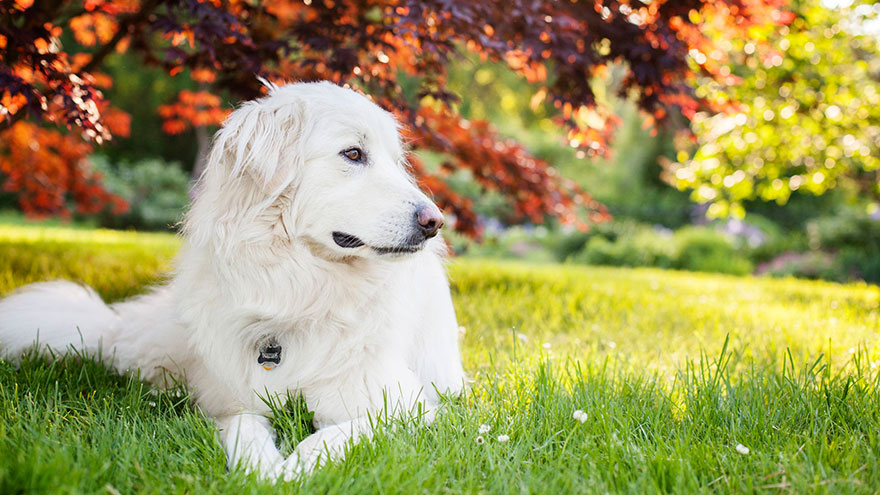Great Pyrenees Training Guide
The Great Pyrenees is a large dog – some might even say the breed is massive. Adult Pyrenees look like a large white bear, so they have a frightening appearance to some people. This is something to keep in mind as you consider bringing a Great Pyrenees into your home.
This size, and the natural tendency to be a guard dog and working dog, may be reasons to consider other breeds. However, if you want a loyal companion and a good watchdog, the Great Pyrenees fits the bill. A well-socialized Great Pyrenees can actually be quite calm and friendly.
How to Train Great Pyrenees
This breed has a very strong protective instinct, and is generally serious in nature. The Great Pyrenees can be aggressive toward other dogs and people it is not familiar with, so it would be best to make sure that you buy a puppy from a top breeder who spends time socializing its dogs to be comfortable with people and the other dogs. This step can help eliminate some of the training and behavior problems that might otherwise come up.
One of the things you will want to have in place when you bring a Great Pyrenees home is a large, fenced-in yard. This breed needs regular exercise and, because of its size, plenty of room for exercise.
You should also be aware that the Pyrenees is naturally suspicious of something that makes it feel threatened so this breed may disturb you and the neighbors with its deep bark at night. Basic obedience training will probably be a good idea, though the Great Pyrenees is generally thought to be one of the more difficult breeds to train.

The breed tends to be a bit stubborn, even dominant if the owner allows the dog to gain the upper hand. Consistency in training is a key with the Great Pyrenees. Some owners teach the pet to pull a cart or take part in some structured activity to satisfy the dogs need for exercise and working. After all, the Great Pyrenees spent most of its time guarding sheep and pulling carts and small wagons for its European owners.
Those who have experience with the Great Pyrenees say that the absence of this breed from the obedience competition and other meetings can be tied to its independent nature and its dislike for repetitive training. However, it would be a mistake to think that a well-bred Pyrenees lacks intelligence. It is really just the opposite. This breed’s level intelligence means that it is accustomed to working alone and making decisions alone.
Your dog may be much more comfortable walking the boundaries of your property as a guard dog, pulling a cart or even spending its time guarding the smaller members of the family. Great Pyrenees, even those that are well socialized and comfortable around your family, usually cannot be taught to stay in one place for long. The breed loves to wander and investigate, as well as patrol a large area in their guarding mode.
It will probably not be necessary to train, or try to train, your Pyrenees to sleep on a particular dog bed or blanket, because their soft, thick undercoat and coarse outer coat make a naturally soft blanket. In connection with this, as you work with your Great Pyrenees in areas such as housebreaking and potty training, remember that prevention is always best.
Therefore, plan to take your pet outside early in the morning and again at night, with a trip or two outside during the day being best. If you keep in mind that this breed works slowly and steadily, you will enjoy the learning and growing process much more.
Read More About Great Pyrenees
- Great Pyrenees Breed Information
- Great Pyrenees : 10 Most Common Questions
- Great Pyrenees Health Guide
- Owning a Great Pyrenees : Breeder Recommendations

